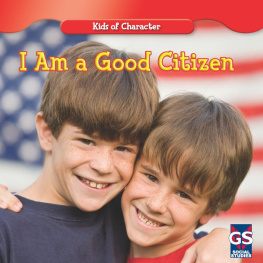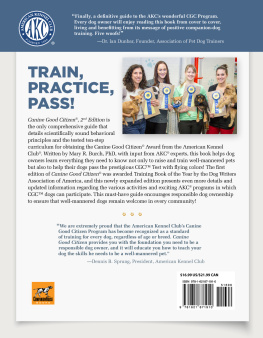Memoirs, by definition, are written depictions of events in peoples lives. They are memories. All the events in this story are as accurate and truthful as possible. Many names and places have been changed to protect the privacy of others. Mistakes, if any, are caused solely by the passage of time.
Copyright 2016 by Jean Baur
Photographs copyright 2016 by Jean Baur, unless otherwise noted
All rights reserved. No part of this book may be reproduced in any manner without the express written consent of the publisher, except in the case of brief excerpts in critical reviews or articles. All inquiries should be addressed to Skyhorse Publishing, 307 West 36th Street, 11th Floor, New York, NY 10018.
Skyhorse Publishing books may be purchased in bulk at special discounts for sales promotion, corporate gifts, fund-raising, or educational purposes. Special editions can also be created to specifications. For details, contact the Special Sales Department, Skyhorse Publishing, 307 West 36th Street, 11th Floor, New York, NY 10018 or .
Skyhorse and Skyhorse Publishing are registered trademarks of Skyhorse Publishing, Inc., a Delaware corporation.
Visit our website at www.skyhorsepublishing.com.
10 9 8 7 6 5 4 3 2 1
Library of Congress Cataloging-in-Publication Data is available on file.
Cover design by Laura Klynstra
Cover photo credit: Leasjo Hall
Print ISBN: 978-1-5107-0240-0
Ebook ISBN: 978-1-5107-0241-7
Printed in the United States of America
CONTENTS
To Beverly and all the wonderful people Bella and I have met in our work as a therapy dog team. And for my five grandchildren: Molly, William, Lucy, Elliott, and Aidan.
FOREWORD
Aime Scott, Special Education Teacher
December 2015
Stonington, Connecticut
B eing a special education teacher is a privilege filled with challenges. These challenges go far beyond teaching reading and math to students who have difficulty learning in the same way or at the same level as their peers. Helping special needs children requires trust, time, and an open mind. It means trying to make decisions that are best for the child, no matter how difficult this makes the teachers work. And underneath it all is an unconditional commitment to make learning and life better for each child.
When I was first approached about having a therapy dog come to work with my students on a weekly basis, I couldnt have been happier. As a dog lover myself, I knew firsthand how special dogs are and how effective they are at breaking through barriers. I was determined to get through the red tape at school to make sure this would be something I could offer my students. With the help of my administrators, Jean and I were able to set up a program with Bella and my students in my first year at a new school.
I admit, I was nervous at first. I had several students who were afraid of dogs, as well as others who had never been near one. Would their parents consent? What would Bella really do with these children? Would she fit in with our curriculum or only be a distraction?
We are now completing two and a half years of having Bella and Jean come to our class each week. Students cuddle up with Jean and read Bella stories on the big cushions. They tell Bella about their day and get her water and treats. They often walk her down the school hallway, a huge status symbol, as the other students cant distract Bella while shes working. She has become a part of our special education resources and a high point for our students. I cant tell you how many times Im asked each week, Is it Friday yet?the children know thats the day Bella comes to school.
So what difference does it make having a therapy dog in our program? Bella accepts the children exactly as they are. If they cant talk, she doesnt care. If theyre struggling to read, she has no judgment. If they were afraid of her, they arent any longer, as her sweetness has won them over. What I see is that Bella helps build our students confidence because she wants to be with them. She licks their faces, listens to their stories, plays whatever games they want, and makes them happy. Its always special to be with Bella.
Bella and Jean have changed my program in the best possible way. Their presence has given my students a way to show what they do know, rather than what they dont know. It has reaffirmed that they are wonderful just as they are, and I love seeing their hands stroking Bellas soft, white fur as they read to her. Bella is also funshe loves rolling on the floor, fetching her ball, prancing down the hallways. I know when Bella visits I will observe the powerful ways this dog reassures the children.
I cannot thank Bella and Jean enough for the changes I see in my students due to their weekly visits. I look forward to the years to come with Bella and Jean, and all the students they will be helping in the future. I hope that more classrooms will be able to have this experience.
INTRODUCTION
B ella, my therapy dog, and I have been visiting The Starfish Homea rehab facilityfor four years (in addition to our work in two hospitals and an elementary school, and a few other places), and one of the residents we visited there was named Rose. She wasnt one of Bellas favorites, as she couldnt talk and didnt give her treats. She was Portuguese and had beautiful posture. Shed sit upright as though entertaining a dignitary, and her eyes brightened when she saw Bella. Her sister was often there in the room, visiting. She thanked me once and said what a relief it was to have a dog in the roomJust something alive and happy is how she put it. I nodded and moved Bella as close to Rose as I could, luring her with a treat. Later, I told Rose we would see her the following week, and she waved. Her face broke into a smile although her eyes looked sad.
It was a casual relationship that lasted about six months, as Rose was one of many wed see in our weekly visits. On our last visit with Rose, she was in bed, her head flung back on her pillow, her eyes closed and mouth open. Not good, said her sister. I put my hand on her arm and said a silent prayer. Bella sniffed around under the bed looking for crumbs. We left. The following week, Roses bed was empty and all her belongings, even the plants from the windowsill, were gone. Just to make sure, I asked the nurse and was told that Rose had passed a few days earlier.
At the end of Roses life, a dog entered her room. A forty-pound whippet, lab, and terrier mixa rescue from Puerto Rico and an unlikely therapy dog because she survived a dangerous place as a puppy and had issues. These issues included not liking many other dogs; hating to have her head patted; a huge phobia of thunder, fireworks, and gunshots; and a general fearfulnessand added to that is her terrier I know best attitude. But despite all this, or maybe because of it, Bella is good at her job. She shows up, shes present, and in ways that are very hard to describe, she reaches people. She does something. She breaks through loneliness and fear.
And shes a busy working girl. She has helped special needs children overcome their fear of dogs and relax while reading a book. In the hospital, she has distracted patients during procedures or nudged them into turning one of those corners that make hard times a little easier. She knows how to cheer up nursing home residents or help college students relax before exams. And despite a lot of training, she reminds me every day that shes a dog. She obeys (mostly), she knows the routine, but she clearly has her own ideas about things and will not, for example, stand still if a nurse comes rushing toward her proclaiming in a high-pitched voice, Oh, look! A dog!












